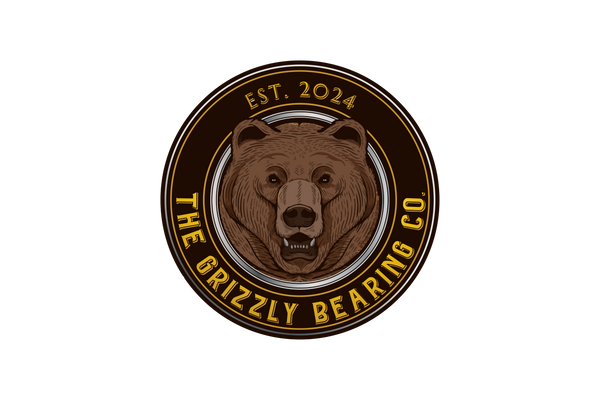Headset Bearings: The Potential for a Headache but we'll keep you right!
Share
Headset Bearings: The Potential for a Headache but we'll keep you right!
When was the last time you thought about your headset bearings?
If you're like most cyclists, the answer is probably "never" – until something goes wrong.
Your headset bearings work tirelessly every time you turn your handlebars, absorbing impacts and keeping your steering smooth. Yet they're often the most neglected parts on our bikes.
What Exactly Are Headset Bearings?
Headset bearings sit at the top and bottom of your head tube, allowing your fork to rotate smoothly while supporting the weight of you and your bike. Every bump, every turn, every brake – your headset bearings are there, working silently in the background.
Unlike the bearings in your wheels that everyone can see spinning, headset bearings are hidden away, doing their job. But when they start to fail, you'll know about it immediately.
Headset Bearings Specifications
Headset bearings are sealed cartridge bearings but they are very different from other sealed cartridge bearings found in your bike.
Headset bearings will have a larger diameter than other bearings in your bike but will, generally, be thinner. They are, also, angular contact so in addition to standard bearing dimensions, they will also have their angles noted i.e. 36 degrees/ 45 degrees, 45 degrees/45 degrees etc. This means that the headset bearings can handle both radial and axial loads (forces both perpendicular and parallel to the bearing axis). Perfect for steering!
What you need to consider when buying Headset Bearings
-
Headset Type
Before you can choose the right bearings, you need to understand what type of headset your bike uses. There are three main types, and each one requires completely different bearings:
Zero Stack (ZS) Headsets: The bearings sit directly in cups that are pressed into your frame's head tube, you will be able to see a thin lip above/below the head-tube. The bearing cups are pressed in deep enough that the top surface is level with the head-tube. This creates a clean, minimal look but requires precise frame machining. ZS headsets are popular on modern mountain bikes.
External Cup (EC) Headsets: These are the "traditional" style where metal cups are pressed into the frame, but they stick out above and below the head tube. You can easily see the cups protruding from the frame - they look like small metal cylinders extending from the top and bottom of the head tube. The bearings sit inside these external cups. This design is robust and allows for easier bearing replacement, making it popular on entry-level and some high-end bikes where serviceability matters more than aesthetics.
Internal (IS) Headsets: The most modern approach - no cups at all. The frame's head tube is precisely machined with angled surfaces, and the bearings sit directly against these machined surfaces inside the frame. You can't see any external components; everything is hidden inside the head tube. This creates the cleanest look and potentially the lightest setup, but requires expensive precision machining of the frame. It's becoming standard on high-end carbon frames.
You can get many combinations of headsets so bearings can either be the same top and bottom or completely different.
-
Head-tube type and size
To make it even more complex, the type of headtube you have i.e. straight or tapered will, also, have an effect on the type of headset and its bearings.
If you have a straight head tube, the diameter of the head tube will be the same top and bottom so, generally, it will be the same bearing top and bottom.
If you have a tapered head-tube, then you will have a smaller diameter at the top and a larger diameter at the bottom so different bearing sizes.
Getting the type of headset wrong or the size of the headset wrong and your bearings simply won't fit - or worse, they'll fit poorly and fail quickly.
The Bottom Line
Your headset bearings might be small, but they play a massive role in your riding experience.
Understanding whether you have zero stack, external cup, or an internal headset and what type of head tube you have are the first steps to proper maintenance and replacement. It is so important to get the sizes right or the consequences can be inconvenient or, at their worst, grave.
When you have the correct bearings, it is then important to make sure that you take care of them. We'll go easy on you and cover this next week. We'll look at regular checks you can complete and maintenance tips so, see you then!
Have a great week!
What's your experience with headset bearing maintenance? Do you know which headset type your bike uses? Let us know in our Social Media post.

